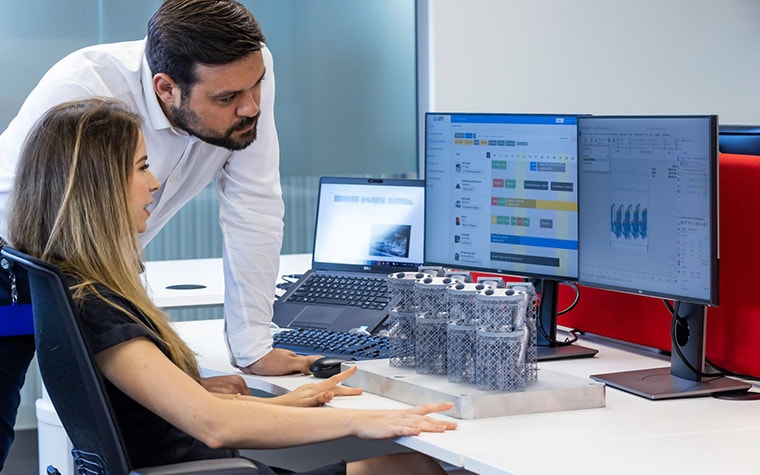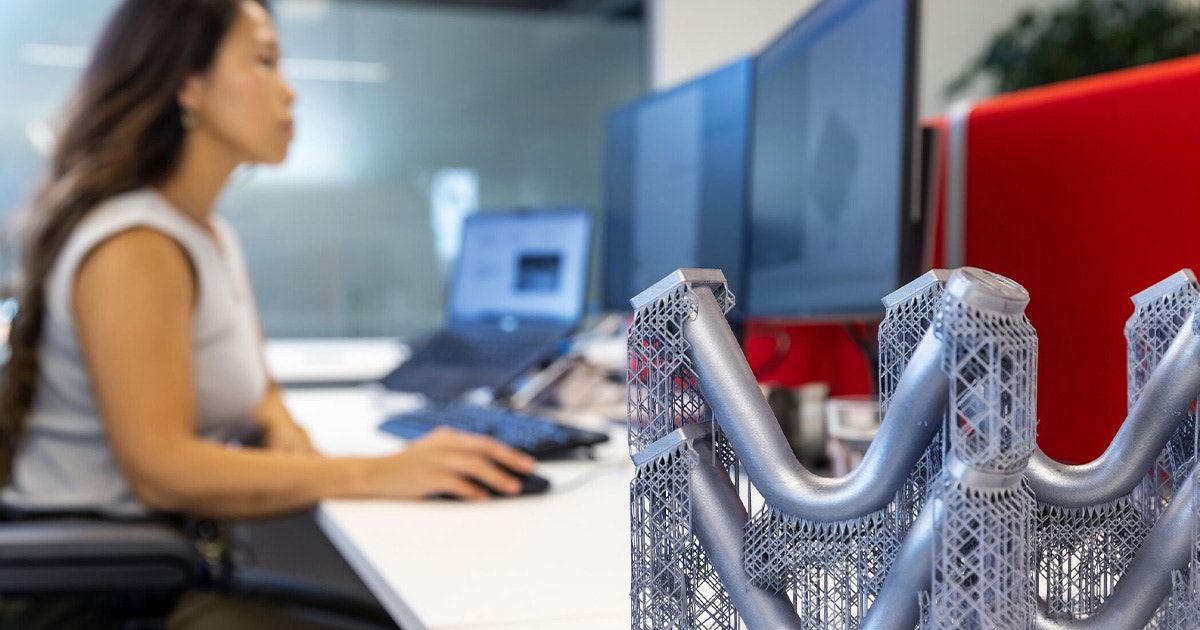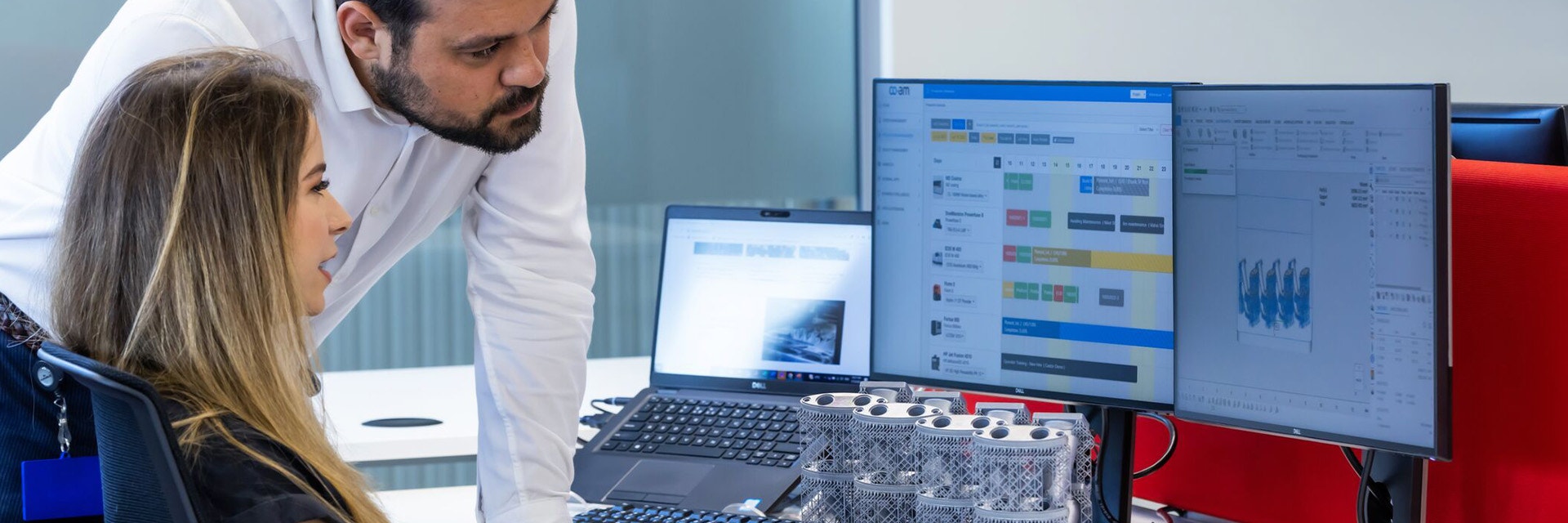EXPERT INSIGHT
Change Your Mindset: How Automating Metal Support Generation Benefits Your Workforce and Production Methods

Additive manufacturing (AM) is a fantastic technology that makes the impossible, possible — particularly compared to traditional manufacturing techniques. Complex designs and intricate geometries are a breeze with AM, for example. However, it’s not perfect. Sometimes, your workforce will need to overcome specific challenges to reap its many benefits, especially when dealing with metal 3D printing. So, how can you simplify metal AM for your team and ensure they get the most out of it? A change in mindset and AM software that automates the entire support generation process.
Change your mindset series
In the first article of our Change Your Mindset series, we explored how an “If it ain’t broke, don’t fix it” mentality toward metal 3D printing can lead to inefficient and cost-prohibitive workflows. Additionally, we analyzed how AM software that automates complex steps in your workflow, like simulation, iteration, and even support generation, can help you save big during your metal production processes. In this article, we’ll cover how employees with different profiles and experience levels can leverage Materialise e-Stage for Metal+ and achieve first-time-right prints.
Explore the other articles in the series:
How automating support generation benefits specific profiles in your workforce
Research and development (R&D) spending by the world’s top 2,500 companies has steadily increased, topping €1.3 trillion in 2022.1 Why are companies spending such huge amounts on R&D? Because they believe it brings new innovations, products, services, or business models.2 AM workers situated in R&D often focus on research or component development. It’s a meticulous job, and researchers must juggle different projects. As a result, based on the heavy investment companies make in R&D and its complexity, it’s imperative staff can concentrate on their core tasks instead of trying to perfect support strategies. Automation allows them to fulfill this assignment successfully and make progress with AM.
“Researchers are bombarded with a multitude of different geometries, and they’re forced to produce individual build setups: it’s rather overwhelming at times,” states Chris Jastrzembski, Regional Account Manager at Materialise Software North America. “It’s challenging from a technical perspective but also extremely time-consuming, preventing researchers from focusing on the actual research part of their job. During the new product introduction (NPI) phase, we observed a significant reduction in iterations with e-Stage for Metal+, thereby shortening project lead times. Improving the NPI process helps you achieve parts within tolerance and budget,” he says.
How automating support generation provides a helping hand to your staff
Automation software benefits not just individual work profiles but also all types of users, from newcomers to seasoned professionals. e-Stage for Metal+ supports both ends of the knowledge spectrum, lowering the learning curve for inexperienced users while speeding up workflow productivity for experienced users looking to automate the process.
“This new e-Stage promotes a more standardized approach and the automation of supports will help create a universal tribal knowledge base in the industry. The software significantly reduces training time required for employees and eliminates much of the variability between designers setting up components, from a process perspective,” says Stephen Howard, Account Manager at Materialise Software UK. “We used to joke that it takes employees at least six months to get usable parts from a machine. That’s not the case anymore; e-Stage for Metal+ supports everyone, wherever you are on your metal AM journey,” he declares.


How using support generation software caters for series and one-off productions
Series and one-off productions are also beneficiaries of automation software. In series production, you need to consider the entire product life cycle, from development to qualification. Automation tools are crucial during the NPI stage and help ensure quality and repeatability during the qualification/production phase.
Plus, for one-offs (an offering that’s the bread and butter for service providers), the most critical factors are often meeting customer demand, timely delivery, and maintaining profitable margins. However, it all starts with competitive pricing facilitated by the quick calculations offered by AM software such as e-Stage for Metal+. “It’s extremely important for them to have software that ensures reliability and repeatability. This advanced module simplified the entire process, from pricing to delivery, giving them a competitive edge. There’s a noticeable difference compared to the regular e-Stage,” says Chris.
Empower your staff and change their mindset with AM support generation software
In conclusion, simplifying metal AM for your workforce can help them get the most out of their builds and ensure you maximize your staff’s potential. How? By shifting your company’s mindset and adopting support generation software. e-Stage for Metal+ makes your staff more efficient by reducing unnecessary tasks related to support generation. It provides a standardized approach, leveling the playing field for all workers, and helps them manage different production methods.
In the final article of our Change Your Mindset series, we’ll discuss how support generation software aids post-processing, reduces material consumption, and makes 3D printing more economically viable for companies.
Share on:
You might also like
Never miss a story like this. Get curated content delivered straight to your inbox.
